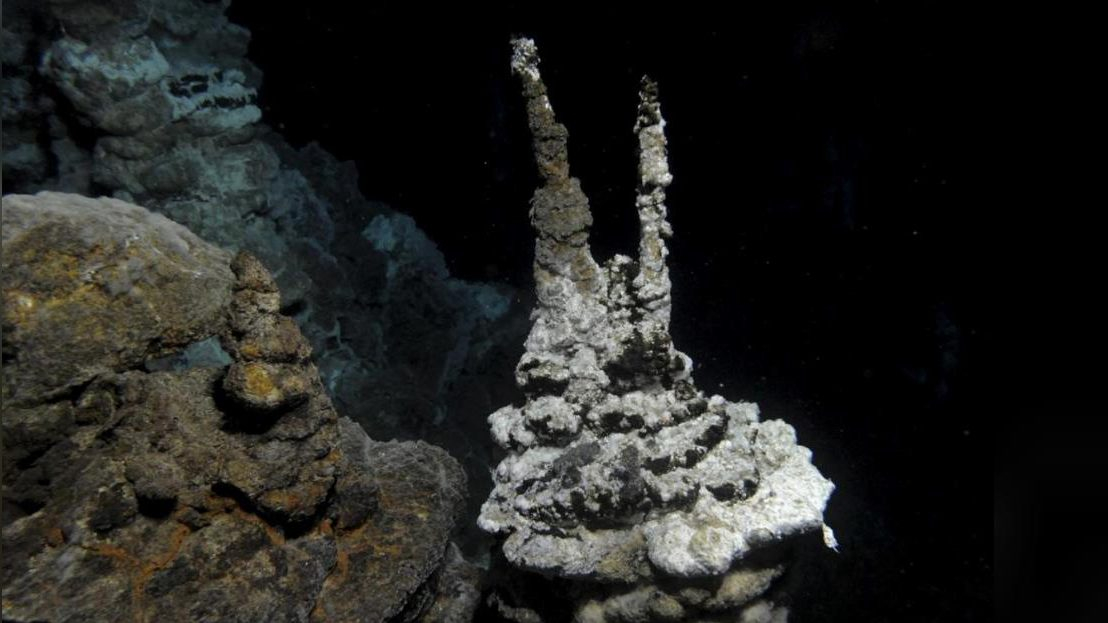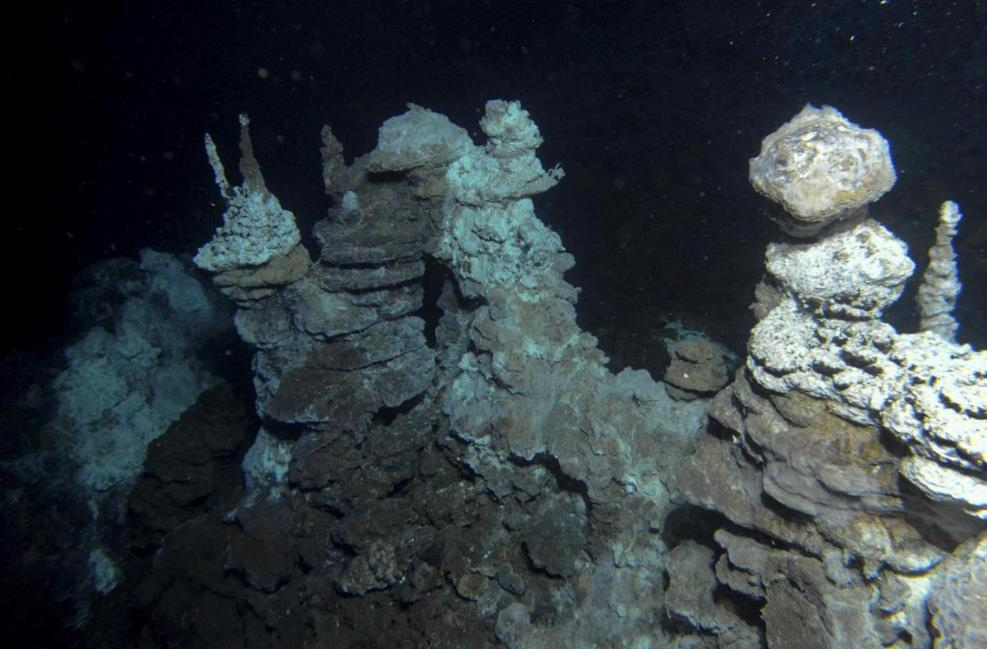
Tech & Sci
13:50, 13-Jun-2018
Scientists weigh up deep-sea microbes at volcanos
CGTN

A new study published on Monday in the Proceedings of the National Academy of Sciences, estimated that deep-sea hydrothermal vent microbial communities worldwide could produce more than 4,000 tons of organic carbon each day.
That is roughly the same amount of carbon in 200 blue whales, making these ecosystems among the ocean's most productive on a per volume basis, according to Woods Hole Oceanographic Institution (WHOI), a private, non-profit organization in the United States.
Those surprisingly productive microbe-based ecosystems play an important role in supporting life higher up the food chain in the food-starved deep ocean, according to the study.

Deep-sea hydrothermal vent microbial communities worldwide could produce more than 4,000 tons of organic carbon each day, according to a new study. /Reuters Photo
Deep-sea hydrothermal vent microbial communities worldwide could produce more than 4,000 tons of organic carbon each day, according to a new study. /Reuters Photo
"We found that microbial communities living below the seafloor at vents can generate similar amounts of carbon as the well-known animal communities above seafloor, like the tube worms, which are known to be as productive as rainforest ecosystems," said Stefan Sievert, a microbiologist at WHOI and senior author of the study.
"The significant amounts of carbon these organisms produce daily provide an important source of food and energy for other organisms in the deep sea, where there's generally a lot less carbon available," said Sievert.
The microbes at vents get their energy to live and grow through chemosynthesis, feeding off a chemical cocktail of hot hydrothermal fluids emanating from the ocean's crust.
And they, in turn, represent the base of the food web, providing food for other organisms that require preformed organic matter, just like humans do.
"Some of the microbes in the incubations doubled their populations in just a few hours," said Sievert. "This points to a very active sub-seafloor biosphere at deep-sea vents."
(Top image: A hydrothermal vent field along the Arctic Mid-Ocean Ridge. /Reuters Photo)
Source(s): Xinhua News Agency

SITEMAP
Copyright © 2018 CGTN. Beijing ICP prepared NO.16065310-3
Copyright © 2018 CGTN. Beijing ICP prepared NO.16065310-3